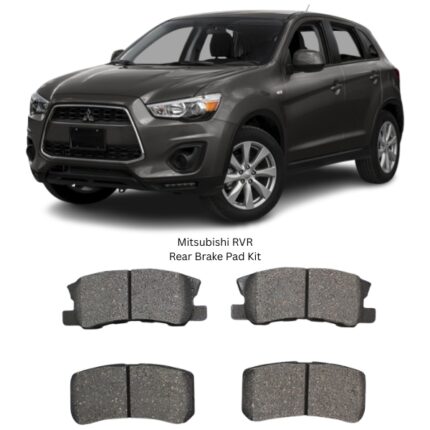Get Mitsubishi RVR Steering Rack End Sub-Assy SR-B010 in Kenya
Find the best prices for Mitsubishi RVR Rack End in Nairobi Kenya.
The price for Mitsubishi RVR Rack End is Ksh5500 set in Nairobi Kenya.
Rack ends, also known as inner tie rod ends, are integral components in the steering mechanism of a vehicle. Positioned at the inner ends of the steering rack, they connect to the tie rods and play a crucial role in transmitting steering inputs to the wheels. As the driver turns the steering wheel, the rotational force is transferred through the steering rack, and ultimately, it is the rack ends that facilitate the lateral movement of the tie rods, directing the wheels to turn left or right.
Functionality:
The primary function of rack ends lies in their role as connectors between the steering rack and the tie rods. They serve as the intermediary components responsible for transforming the rotary motion initiated by the steering wheel into the linear motion needed to adjust the orientation of the wheels. This translation of steering input into wheel movement is essential for controlling the direction of the vehicle.
Components and Construction:
Rack ends typically consist of a threaded rod with a ball-and-socket joint at one end. The threaded section connects to the inner tie rod, and the ball joint connects to the steering rack. The ball-and-socket joint allows for flexibility and movement, crucial for accommodating the dynamic forces and adjustments required during steering.
These components are constructed from durable materials, often high-strength steel or alloys, capable of withstanding the mechanical stresses and forces encountered during steering maneuvers. Some rack ends feature grease fittings to allow for lubrication, minimizing friction and wear.
Importance of Rack Ends:
- Steering Precision: Rack ends are paramount for maintaining steering precision. Their role in translating the steering wheel’s input ensures that the driver has accurate and responsive control over the direction of the vehicle. Any play or wear in the rack ends can result in imprecise steering, affecting the overall handling of the vehicle.
- Alignment Stability: Rack ends contribute significantly to maintaining proper wheel alignment. They help ensure that the tie rods, which are connected to the rack ends, move in a coordinated manner, preventing misalignment issues that could lead to uneven tire wear and compromised vehicle stability.
- Safety Assurance: The integrity of rack ends is directly linked to the safety of the vehicle. In the event of a failure or significant wear in the rack ends, steering control can be compromised, posing a safety risk. Regular maintenance and prompt replacement of worn rack ends are crucial for ensuring a safe driving experience.
- Tire Wear Prevention: Properly functioning rack ends contribute to even tire wear. Misalignment caused by worn rack ends can result in uneven tire tread wear, reducing the lifespan of the tires and potentially impacting vehicle safety.
- Handling Performance: Rack ends play a vital role in the overall handling performance of a vehicle. Their smooth operation ensures that steering inputs are translated seamlessly into wheel movements, contributing to stability and predictability during turns and maneuvers.
Common Issues and Maintenance:
Despite their robust design, rack ends can experience wear and other issues over time. Common issues include:
- Looseness or Play: The ball-and-socket joint in rack ends may develop play or looseness, particularly if the protective boot is damaged or compromised. This can result in imprecise steering, vibrations, and audible clunking noises during driving.
- Boot Damage: The protective boot covering the ball joint is susceptible to damage from road debris, moisture, or wear. A damaged boot can lead to contamination of the joint, reducing its lifespan and potentially causing premature failure.
- Wear and Tear: Continuous movement and exposure to road conditions can lead to wear in the ball-and-socket joint. Regular inspections are crucial to identify signs of wear, such as excessive play or visible damage.
- Lubrication Issues: Adequate lubrication is critical for the smooth operation of rack ends. Lack of lubrication or dried-out grease can accelerate wear and contribute to premature failure. Regular maintenance checks should include inspecting and, if necessary, replenishing the lubrication.
Regular inspections during routine maintenance, including wheel alignments, are essential for identifying potential issues with rack ends. When replacement is warranted, it is advisable to use high-quality components that meet or exceed original equipment manufacturer (OEM) specifications.
Conclusion:
In the intricate ballet of automotive engineering, rack ends stand as guardians of steering precision, alignment stability, and overall vehicle safety. Their role as intermediaries between the steering rack and the tie rods is foundational to the controlled and predictable movement of the wheels. Recognizing the significance of rack ends emphasizes the importance of regular maintenance, inspections, and timely replacements to ensure the continued safety and performance of a vehicle. These unassuming components, hidden beneath the chassis, embody the meticulous engineering that defines a reliable and secure means of transportation.
Follow us on Facebook for more parts.




